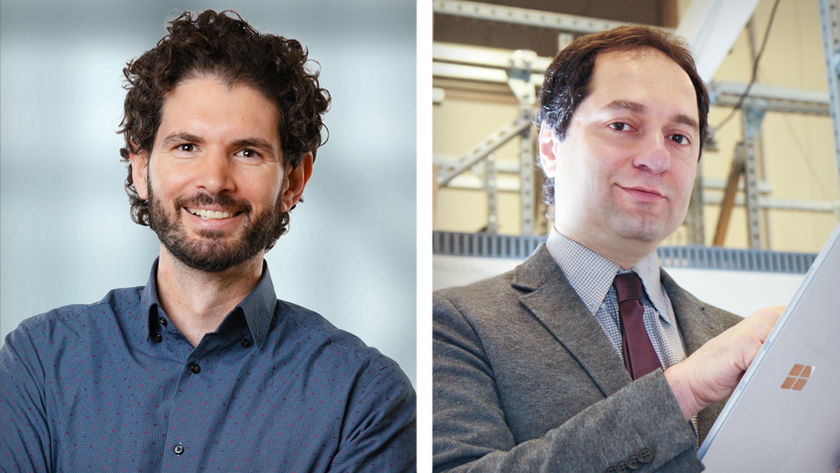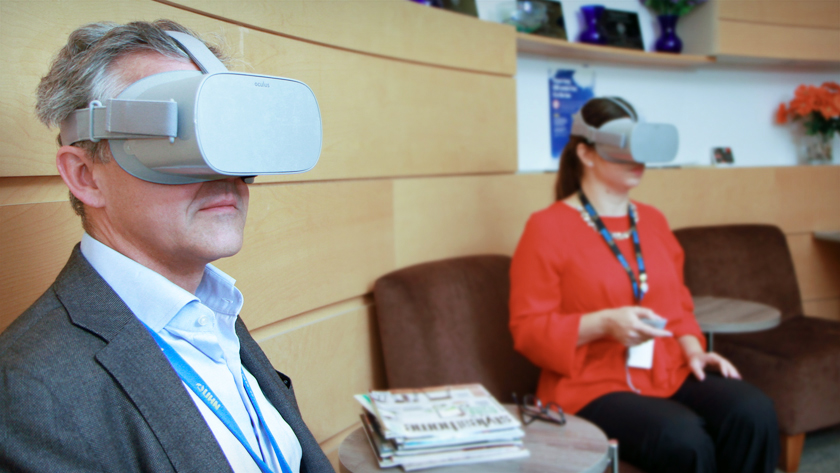
As the popularity of virtual reality (VR) increases across all sectors, including health care, some people might be left behind. This is because certain individuals are prone to experiencing visually induced motion sickness (VIMS), a special form of motion sickness.
New research is revealing that VR can help patients manage chronic pain, anxiety, phobia and depression. It can also help them to recover after physical injury through VR-based rehabilitation. “Motion sickness in VR is a concern because it can limit individuals from receiving these benefits,” says Dr. Behrang Keshavarz, KITE Scientist.
Dr. Keshavarz led a research team, along with another KITE Scientist, Dr. Babak Taati, to find ways to detect and predict the early onset of VIMS.
Many of the symptoms of VIMS, such as nausea, disorientation, and fatigue are hard to objectively quantify and assess. The body does provide some clues: motion sickness changes heart rate and breathing. It can also cause stomach churning. However, researchers have not yet identified a pattern to these changes that can predict VIMS.
To address this problem, the team used their expertise in machine learning. They set out to identify measurable physiological patterns that could potentially detect the early stages of VIMS or even predict which people are vulnerable to it.
A group of 56 volunteers were equipped with a variety of sensors that monitored their breathing, heart activity, sweating response, body and facial skin temperature, body movement, and the electrical activity from their digestive system. They were then exposed to a first-person video of a bicycle ride, which causes VIMS in the majority of people.
Changes in the skin temperature of the face and the amount of the participants’ body movement were the best indicators for VIMS—physiological changes that are fortunately easy to measure non-invasively. Unfortunately, the degree of accuracy that the machine learning models achieved were not high enough to be used as a sole measure of VIMS: it would correctly identify approximately 70% of those who had motion sickness, while mistakenly flagging 30% of those who did not experience motion sickness as being at risk.
“These results are a first step. While our results identified physiological measures that are closely linked to the onset of VIMS, we also discovered that the physiological measures that we tested are not sufficient to make definite predictions. To increase our predictive power, our future work will explore the use of facial skin temperature and other measures that have been under-studied in evaluating motion sickness,” concludes Dr. Keshavarz.
To learn more about how UHN researchers are using virtual reality to address health issues visit the Prescribing VR website.
This work was supported by Faurecia and the UHN Foundation. Dr. Behrang Keshavarz is an Adjunct Professor with the Department of Psychology at Toronto Metropolitan University. Dr. Babak Taati is an Assistant Professor in the Institute of Biomedical Engineering at the University of Toronto.
Keshavarz B, Peck K, Rezaei S, Taati B. Detecting and predicting visually induced motion sickness with physiological measures in combination with machine learning techniques. Int J Psychophysiol. 2022 Jun;176:14-26. doi: 10.1016/j.ijpsycho.2022.03.006.

UHN staff using virtual reality at the Toronto General Hospital Wellness Oasis (picture taken in 2019). Virtual reality is increasingly being used in education, research and health care.




